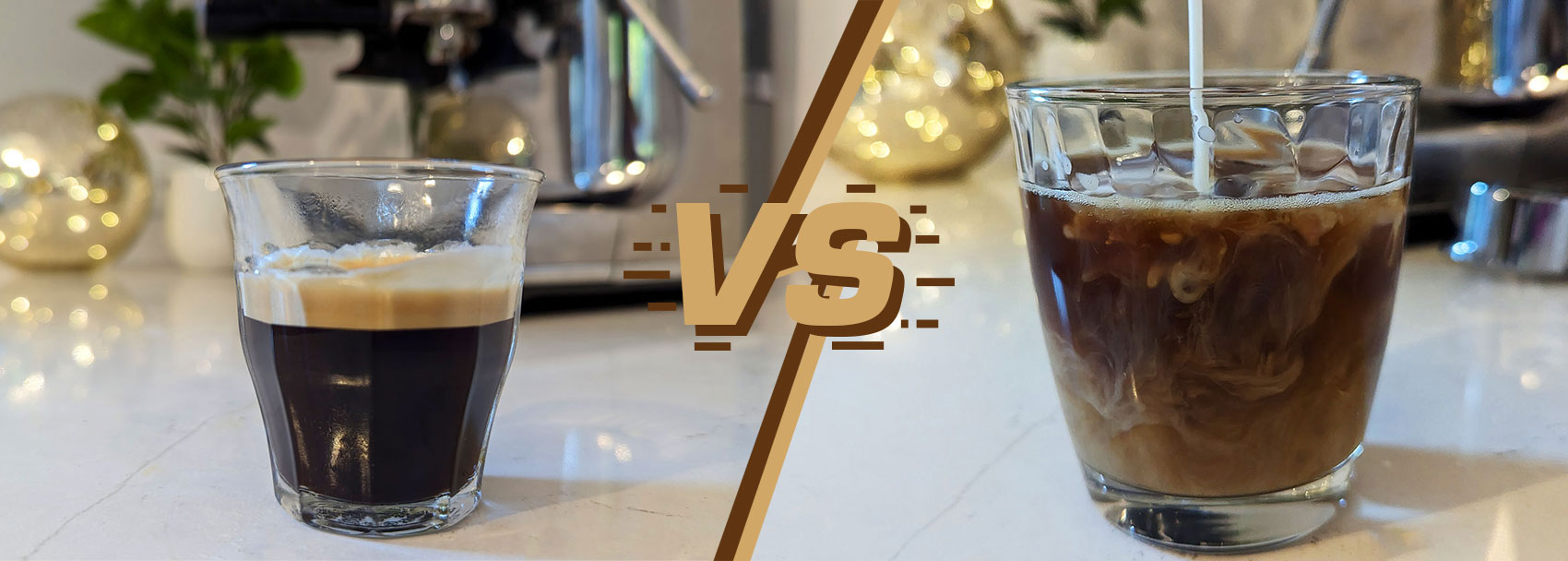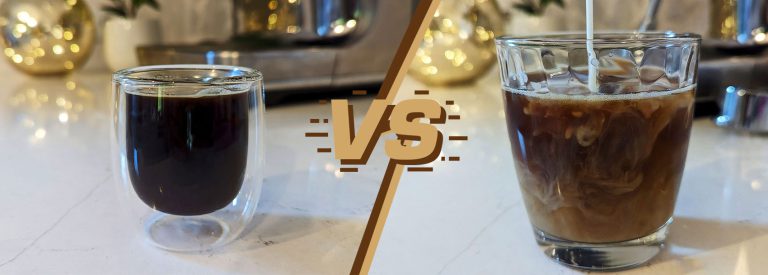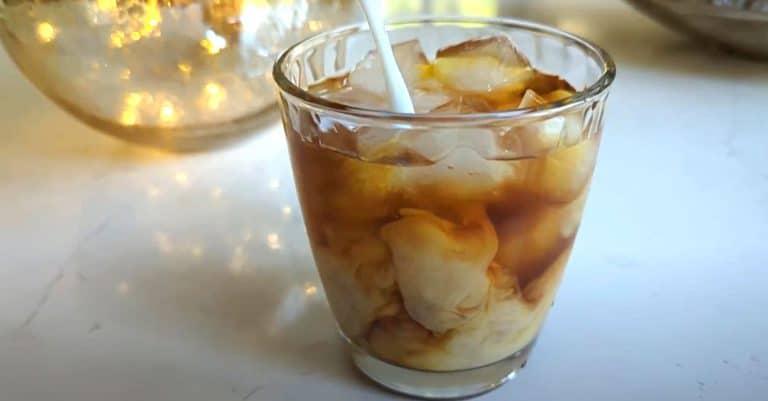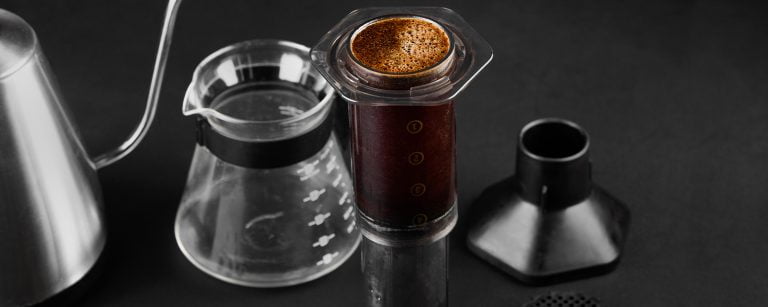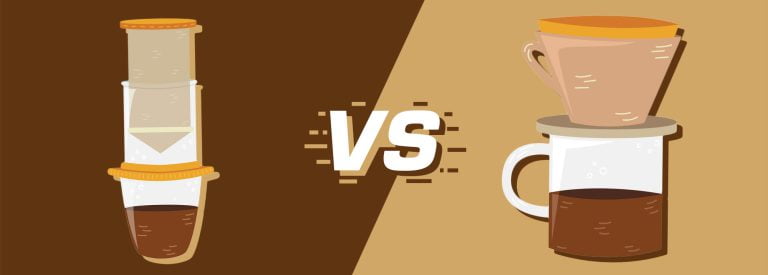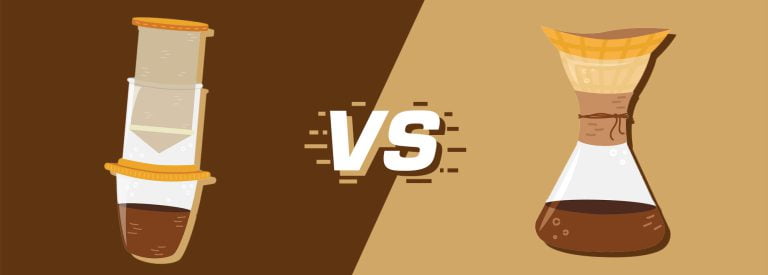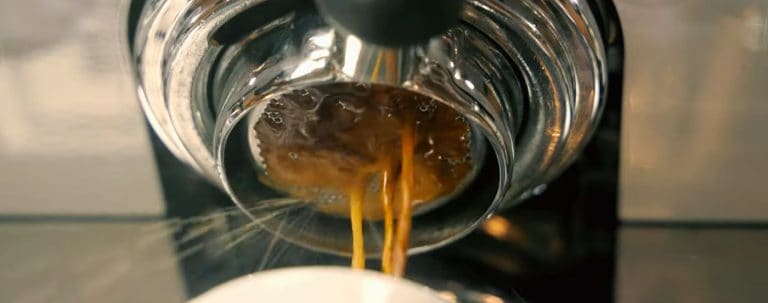Espresso vs Cold Brew: Comparing Two Coffee Titans
Espresso and cold brew are two titans in the global coffee scene right now, but many people don’t know how they differ.
If you’re asking this question as you look at the menu of a coffee shop, don’t worry, you’re not alone. But after reading this article, you’ll have the knowledge you need to know what sets espresso and cold brew apart from each other, with all the details you need to converse as a skilled home barista.
Let’s get started.
What is an Espresso?
The story of espresso started in Italy when Luigi Bezzera filed the first patent for the machine back in 1901. This invention aimed to quickly brew a potent coffee shot by pushing hot water through finely-ground coffee using intense pressure.
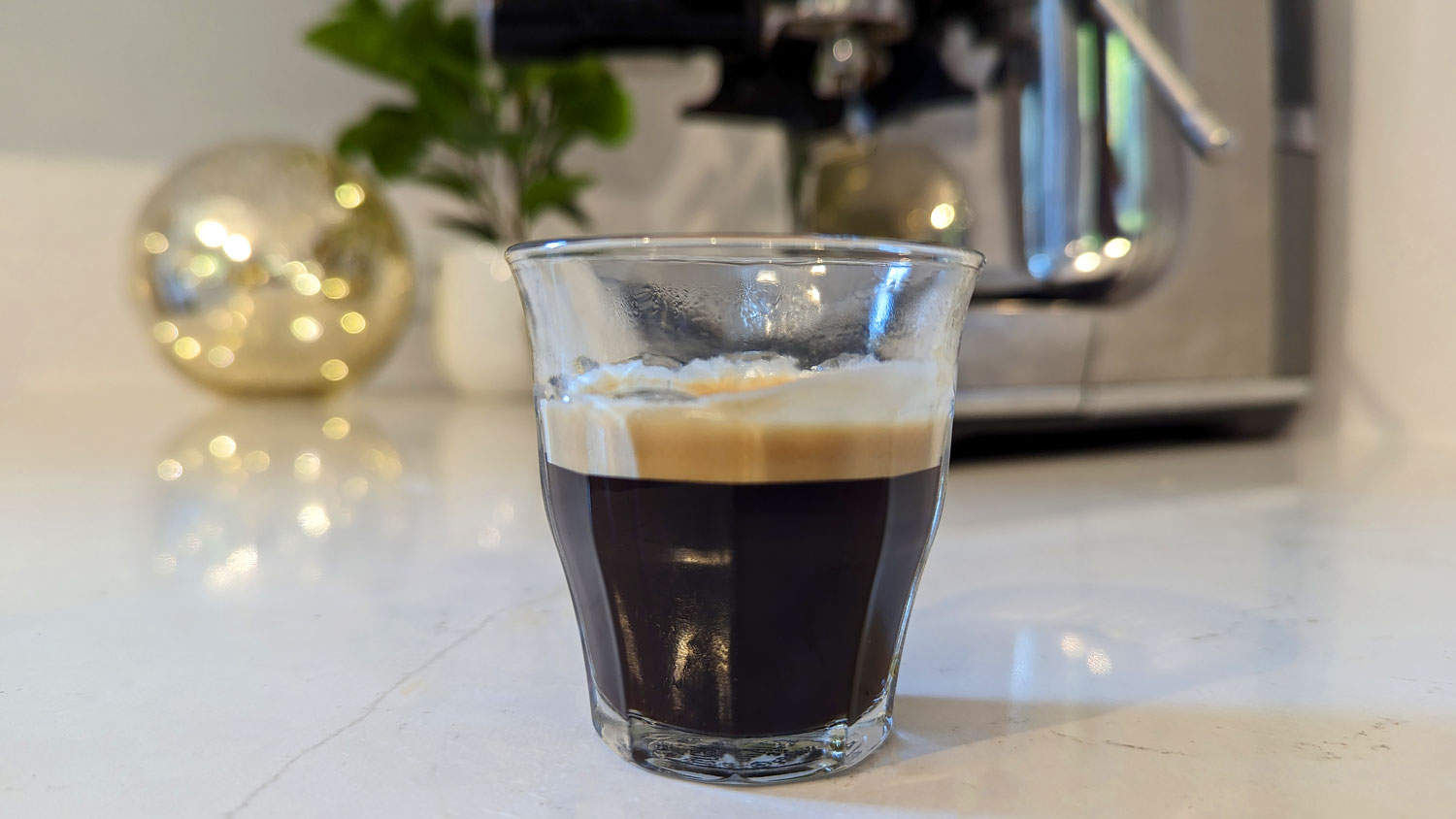
To prepare an espresso, you aim for a coffee-to-water ratio of 1:2 to 1:3. Use 7g of coffee to brew 1 oz (30 ml) of espresso, also referred to as a single shot, and 14g for a 2 oz (60 ml) double shot. In the case of third-wave coffee though, you want to use 9g and 18g for single and double shots respectively.
Both the single and double shots are served in a demitasse that can contain between 60 to 90 ml (2–3 US fl oz) of liquid.
Each espresso shot comes with 60 to 80mg of caffeine and just 2 calories. That’s too little that I just consider espresso calorie-free. Even a doppio will only have 4 calories, so you can integrate it into any diet 🙂
Onto the taste, the flavor of espresso is quite potent and intense. A well-prepared brew will have a delicate balance between its natural sweetness and bitterness, while having some acidity. Depending on the roast level, your coffee can have chocolate or caramel accompanied by hints of nuttiness.
Check out my list of the best coffee beans for espresso right now.
Texture-wise, I really like espresso’s thick consistency which enhances the experience as I savor every drop of my coffee. And you can’t ignore the crema – that golden foamy layer on top that also adds bitterness to your cup, so be sure to give it a swirl before drinking.
Here’s an overview of how you can make an espresso:
- Dose the right amount of coffee beans.
- Grind with a fine setting.
- Level and tamp your grinds in the portafilter.
- Connect the portafilter to the espresso machine.
- Extract the espresso.
- Analyze taste.
To really get into the art of brewing espresso, check out my detailed guide on how to make an espresso.
Now let’s look at cold brew.
What is Cold Brew?
Digging into its origins, cold brew initially appeared in Japan where it was known as Kyoto-style coffee. This unique brewing technique involves soaking coarse coffee beans in cold or room-temperature water for 12 to 24 hours.
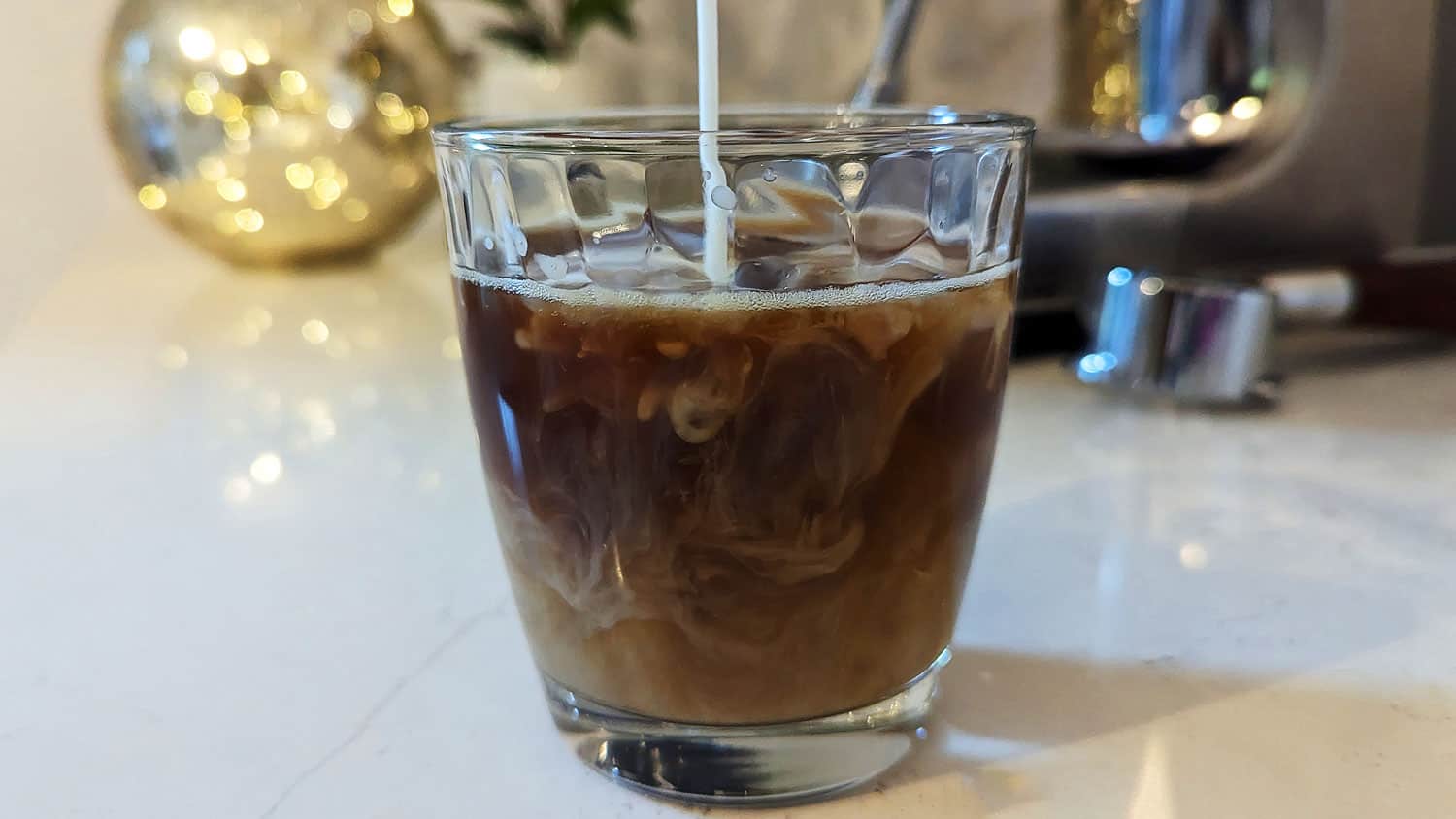
The proportion of coffee to water here is fixed at 1:5, so every 100g of coarse coffee is immersed in 500 ml of water. When it’s served, 1 oz (30 ml) of cold brew concentrate is mixed with equal parts water and/or milk with some added ice. The final drink comes in a spacious or tall glass cup that can accommodate 180 to 300 ml (6 to 10oz) with each 1 oz of cold brew concentrate having 60 to 80mg of caffeine and 4 calories.
What makes cold brew famous is its smooth, mellow, and subtly sweet profile. Steeping the coffee in cold water extracts fewer bitter compounds so it’s less acidic and not as bitter as your regular cup of joe.
Having a cold glass of cold brew on a hot summer day is the best time to enjoy this drink I think, but you can even drink it undiluted and warmed as an espresso.
The texture is clean, smooth, and somewhat velvety making it a really refreshing drink that you can enjoy sipping for longer periods of time. Add milk and you have richer, creamier coffee, although it also comes with extra calories.
It’s also simple to make, but it does take several hours to steep. Here are the steps to making cold brew:
- Measure the coffee and grind it with a coarse setting.
- Measure the filtered water.
- Mix the grinds and water in a jar.
- Seal and steep at room temperature for 12-24 hours.
- Filter the coffee.
- Store the concentrate in the fridge.
- Dilute in water or milk before serving.
To really know how cold brew is made, check out my guide on how to make a cold brew.
Espresso & Cold Brew Compared: Discovering the Differences
Let’s break down the characteristics of espresso and cold Brew with this handy comparison table:
| Aspect | Espresso | Cold Brew |
|---|---|---|
| Taste and Texture | Robust, concentrated, dense, syrupy | Smooth, mellow, slightly sweet |
| Coffee-to-Water Ratio | 1:2 to 1:3 | 1:5 |
| Ingredient Ratio | 7 g for a single shot, 14 g for a double (traditional Italian) | 100g of coffee to 500 ml water |
| Typical Serving Size | 1 oz (30 ml) for a single shot, 2 oz (60 ml) for a double shot | 1 oz (30 ml) cold brew concentrate diluted to taste |
| Caffeine Content | 60-80 mg per 1 oz shot | 60-80 mg per oz (30 ml) of concentrate |
| Calories | 2 calories per shot | 4 calories per oz (30ml) of concentrate |
| Acidity | Moderate | Low |
| Brewing Difficulty | Intermediate | Easy |
| Bean Roast | Dark roast is preferred for richer flavors | Dark roast preferred for richer flavors |
Let’s get into detail in comparing the two drinks:
- Ground Coffee Weight & Ratios: Espresso uses 7g of ground coffee for a single shot and 14g for a double shot in the traditional Italian style (Third-wave coffee uses 9g and 18g respectively), brewing with a 1:2 to 1:3 coffee-to-water ratio.
As for cold brew, 100g of coffee is steeped in 500 ml of water to achieve a 1:5 brew ratio. After brewing, a 1 oz cold brew concentrate is diluted in equal parts milk or water with ice thrown in before serving. - Taste: Espresso offers a robust and concentrated flavor with a balance of sweetness, bitterness, and acidity, revealing notes like chocolate or caramel and some hints of nuttiness depending on the roast. While espresso is more potent and velvety, cold brew is smoother and more mellow with a slight sweetness combined with reduced acidity and bitterness.
- Volume, Calories, & Caffeine: A single espresso shot is 1 oz (30 ml) and a double shot is 2 oz (60 ml) in serving, with each shot having 2 calories and 60-80 mg caffeine.
Meanwhile, 1 oz of cold brew concentrate is diluted with equal parts water or milk. Each concentrate has the same amount of caffeine as espresso, but it doubles the calories to 4. The more milk added the more calories go into your cup. - Bean Roast: My preferred roast levels for third-wave espresso are light to medium roasts because the beans’ vibrant flavors can really shine. When going for traditional Italian espresso though, dark roast Arabica blended with some Robusta is the popular choice.
For cold brew, I highly recommend dark roasts because this immersion method can highlight your coffee’s rich and earthy flavors, and you don’t get the bitterness you would normally expect. - Serving Suggestions: For Espresso, it’s a great idea to have a glass of sparkling water on the side to cleanse your palate, enhancing the nuances of the espresso. Cold Brew can be enjoyed with just ice, but many also add milk, sweeteners, or even dried orange slices for a flavor twist. There are also many cold brew flavorings you can try.
Espresso and cold brew are night and day in the coffee world. Espresso is fast to make, rich and concentrated, and is served hot while cold brew takes hours to make and is served as a cold, smooth drink that’s diluted in milk or water. Still, coffee lovers really appreciate both coffees, with cold brew being super popular in 2025.
Conclusion
Espresso and cold brew each have their own distinct traits that earned them the appreciation of coffee lovers around the world. But if it all boils down to these two brews, I like espresso better. For me, nothing beats sipping on a hot cup of this intense coffee to get me going on my day-to-day.
But hey, we all have our own preferences. I’d like to know yours, which coffee drink do you like better? You can share it in the comments below.

